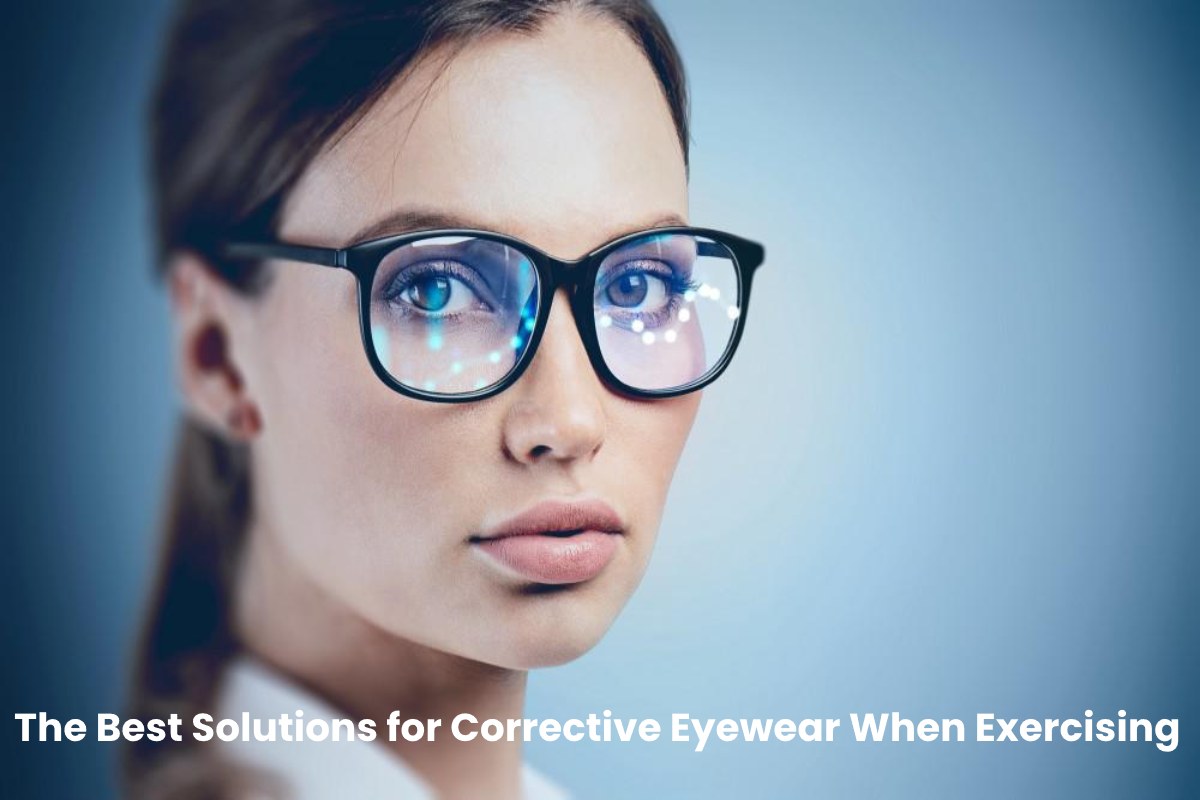
Corrective eyewear are medical devices that handle common vision errors. Contact lenses and glasses are the two most common corrective eyewear. They are usually used to correct refractive errors — visual problems that result from an anomaly in the way light enters the eyes.
Contact lenses and glasses may also be used as fashion accessories. However, exercising with corrective eyewear can be challenging. People with severe vision problems need to find a way around these issues when they exercise. Trying to work out without your eyewear can be dangerous, and exercising with the wrong eyewear can irritate your eyes or compromise your vision.
If you need to wear corrective eyewear before exercising, this article explains ways to make exercising with corrective eyewear a hassle-free experience.
Table of Contents
How to Exercise With Eyewear?
The first thing to know about working out with eyewear is to know the right kind of eyewear for your preferred activity. For example, if you are in a gym, your glasses may become foggy with sweat and become a point of distraction. They can also fall and crack if you lose your balance or slip on a treadmill.
Contact lenses may not get foggy or crack. However, they may be unsuited for water activities like swimming or surfing due to the risk of contamination. Regardless, they are comfortable and can be used for even the most intense exercises. Good contacts are designed to be comfortable, and you can almost forget you are wearing them.
Tips for Exercising With Contact Lenses
Here are our tips for exercising with contact lenses safely and without discomfort.
Stay Hydrated
At first glance, this point may seem out of place. Nonetheless, it all makes sense when you understand that you lose fluids when you exercise, and contacts can exacerbate eye dryness. Contact lenses suck up moisture, and the dehydration that stems from working out can make your eyes feel dry and irritated.
When exercising with contacts, keep your eyes hydrated by taking in enough fluids. You can also ensure your eyes do not get dehydrated by using eye drops or wearing an absorbent headband that prevents sweat from getting into your eyes when you work out.
Choose the Right Contacts
There are many types of contact lenses available, and finding the perfect fit can make all the difference when you exercise. You may require professional advice to get the best contact lens prescription. Soft contact lenses are best for running because of their stability and high oxygen permeability.
Daily disposable contact lenses may also be better than monthly or biweekly contacts since you can simply discard them after every exercise session. Putting on a new pair of contacts each time you work out reduces your risk of getting infected with bacteria from sweat and other sources.
But how much do contact lenses cost? Understanding the cost of it all is crucial before using daily disposables, especially if you work out frequently. Weekly and monthly contacts are also suitable for exercises, but you must adhere to the manufacturer’s contact cleaning and storage guidelines.
Some contact lenses are approved for extended wear, meaning you can wear them for days or weeks without removing them. You can also use extended-wear contacts for exercises without cleaning or changing them. However, it is advisable to get the opinion of an eye care professional before exercising with extended-wear contacts.
Avoid Water Getting Into Your Eyes
Contact lenses and water do not mix well and can put your eyes at risk. Swimming with contacts or splashing water over your head is not recommended unless you can do it without water touching your eyes. Water can push your contacts out of position, leaving you with blurred or distorted vision. It can also carry germs, leading to partial or total vision loss.
If you must perform water exercises with your contacts, do so with watertight goggles over your eyes. You should also remove your contact lenses immediately if they come in contact with water.
Do Not Rub Your Eyes
A workout environment can be a haven for flying objects, insects, and dirt that can get into your eyes. If you are wearing contacts when this happens, try not to rub your eyes with your hands as you can transmit harmful bacteria into your eyes.
You may bring an extra pair of contacts if you are using daily disposable contacts or a bottle of contact lens solution to clean your contacts once you take them out.
Remove your contacts immediately if something gets into your eyes. Now, take out the foreign object, replace the contacts with a fresh one if disposable, or disinfect with a cleaning solution if your contacts are non-disposable.
Tips for Exercising With Glasses
If you are exercising with glasses, these tips will help you make the best out of your workout regimen:
Choose Glasses With Lighter Frames
Glass frames may be bulky and can impede your movement, especially during intense workout sessions. Eyeglasses with lighter frames allow you to move and be the best version of yourself when you exercise.
Some glasses are designed with physical activity in mind, and you want to go for those brands.
Consider Glasses With Ear Grips and Nose Pads
Glasses can bounce and slip when you are in the thick of the action. Wearing glasses with adjustable nose pads and ear grips can prevent interruptions during your workouts.
Therefore, consider buying your glasses from retailers that offer free frame adjustments.
Carry Lens Cleaning Wipes
Rough weather, sweat, and environmental factors can fog up your glasses and make it challenging to see through them. Having a lens cleaning material helps you get rid of stuff that may stick to your glass lenses and cause injuries.
Conclusion
You need good vision to work out safely. Nevertheless, having a bad vision does not have to stop your favourite activities. Although corrective eyewear like glasses and contacts can help you see better, these medical devices can obstruct physical activity.
Thus, adopting the enumerated solutions for exercising with eyewear allows you to work out without jeopardizing your vision or putting your eyes at risk.



